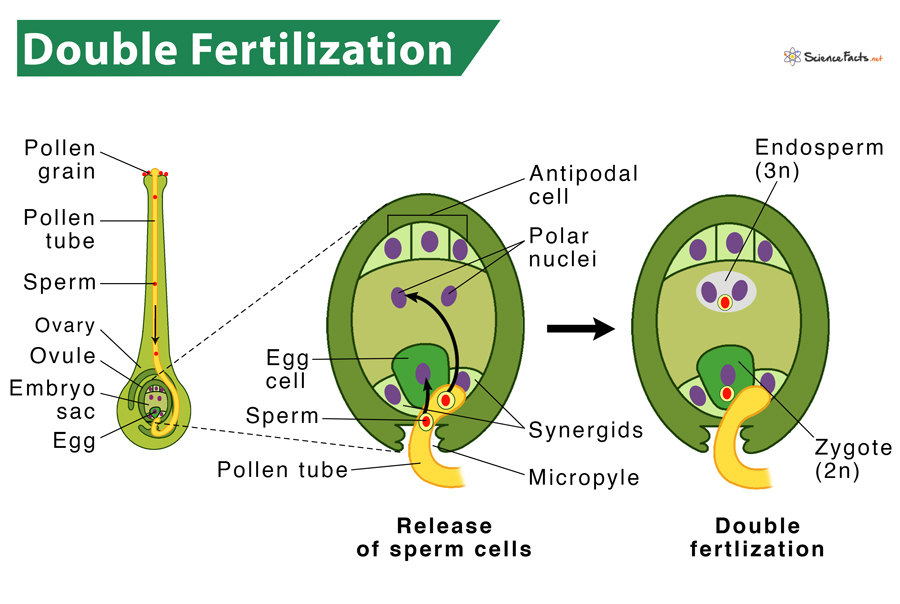Out of the two sperm cells, one fertilizes the egg cell to produce a zygote, and the remaining one fuses with two polar nuclei producing endosperm. It is thus a part of the sexual reproductive process in such plants. Since two fertilization events coincide, it is called double fertilization.
The Process of Double Fertilization in Angiosperms
What does Double Fertilization Produce
Importance of Double Fertilization
Steps
Diploid zygotePrimary Endosperm Nucleus
On completion of double fertilization, the entry of any other sperm gets blocked. The fertilized ovule transforms into a seed, whereas the ovary tissues become the fruit, usually enveloping the seed. Post the fertilization event, the process of embryonic development begins. The zygote splits to form the upper cell (terminal cell) and the lower cell (basal cell). The basal cell transforms into the suspensor, which eventually develops a connection with the maternal tissue, helping transport nutrients to the growing embryo. The terminal cell also divides, producing a globular-shaped pro-embryo that develops into an embryo forming the baby plant.
